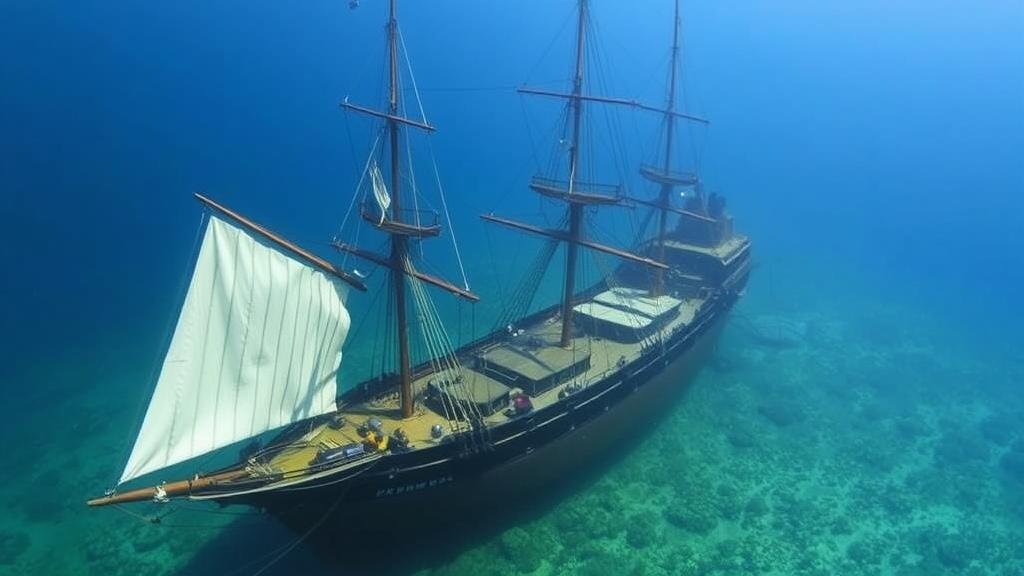Using NOAA’s Maritime Tools to Pinpoint Locations of Historic Sunken Ships
Using NOAAs Maritime Tools to Pinpoint Locations of Historic Sunken Ships
The National Oceanic and Atmospheric Administration (NOAA) plays a pivotal role in maritime research and archaeology through its extensive array of tools and technologies. These resources are critical for locating historic sunken ships, which serve as valuable cultural and historical artifacts. This article explores how NOAA’s maritime tools contribute to the identification and mapping of these submerged treasures, using various case studies to illustrate their effectiveness.
Overview of NOAAs Maritime Tools
NOAA employs a variety of high-tech tools and methodologies designed for underwater exploration and mapping. e include:
- Multibeam Echo Sounders: Used to create detailed underwater topography.
- Side Scan Sonar: Effective for detecting objects on the seafloor.
- Remotely Operated Vehicles (ROVs): Enable close-up examination of identified sites.
- Geographic Information Systems (GIS): Help spatial analysis of maritime data.
Together, these technologies enable researchers to survey large ocean areas efficiently, leading to successful discoveries of historic wrecks.
Case Studies of Successful Shipwreck Discoveries
Several notable examples illustrate how NOAAs tools have led to the pinpointing of historic sunken ships:
- The USS Indianapolis: After being lost in 1945, the cruiser was located in August 2017 using high-resolution sonar developed by NOAA. The use of multibeam sonar allowed researchers to create a detailed map of the seafloor, leading them to the wreck site at a depth of approximately 18,000 feet in the Pacific Ocean.
- The SS Maine: The ship sank in 1898 off the coast of Cuba, and was located using side scan sonar technology. The data collected not only identified the wreck but also provided insights into the condition of the ship, facilitating preservation efforts.
Both of these cases demonstrate the practical applications of NOAAs technologies in locating ships that have significant historical contexts.
Challenges Faced in Maritime Archaeology
While NOAAs tools are advanced, numerous challenges persist in maritime archaeology, including:
- Environment Factors: Strong currents and harsh weather can obstruct the effectiveness of sonar surveys.
- Data Interpretation: Interpreting sonar data requires specialized skills and experience, often leading to misidentification.
- Legal and Ethical Considerations: Issues surrounding ownership and preservation of cultural heritage can complicate the recovery and study of shipwrecks.
Even with these challenges, NOAA continues to enhance its methodologies and collaborate with international organizations to further maritime archaeology.
Impact on Historical Research
The discovery of sunken ships can significantly enhance historical narratives. Through these artifacts, researchers gain insights into maritime trade routes, naval warfare, and cultural exchanges. For example, the study of the artifacts from the USS Indianapolis revealed details about World War II strategies and the human experience during maritime conflicts.
Statistics highlight the scale of the issue: According to NOAA, there are approximately 3 million shipwrecks globally, many of which are yet to be explored or documented. The growth of underwater archaeology is critical for preserving maritime history for future generations.
Conclusion and Takeaways
To wrap up, NOAAs maritime tools play an essential role in the discovery and preservation of historic sunken ships. By employing technologies like multibeam sonar and ROVs, NOAA not only facilitates the exploration of the deep sea but also contributes significantly to our understanding of maritime history.
For anyone interested in engaging with this field, the following actionable steps can be taken:
- Stay informed on NOAA’s research projects by visiting their official website.
- Consider participating in volunteer programs related to maritime archaeology.
- Support policies aimed at preserving underwater cultural heritage.
Through continued exploration and preservation efforts, NOAA is vital in unearthing and safeguarding our maritime past.


